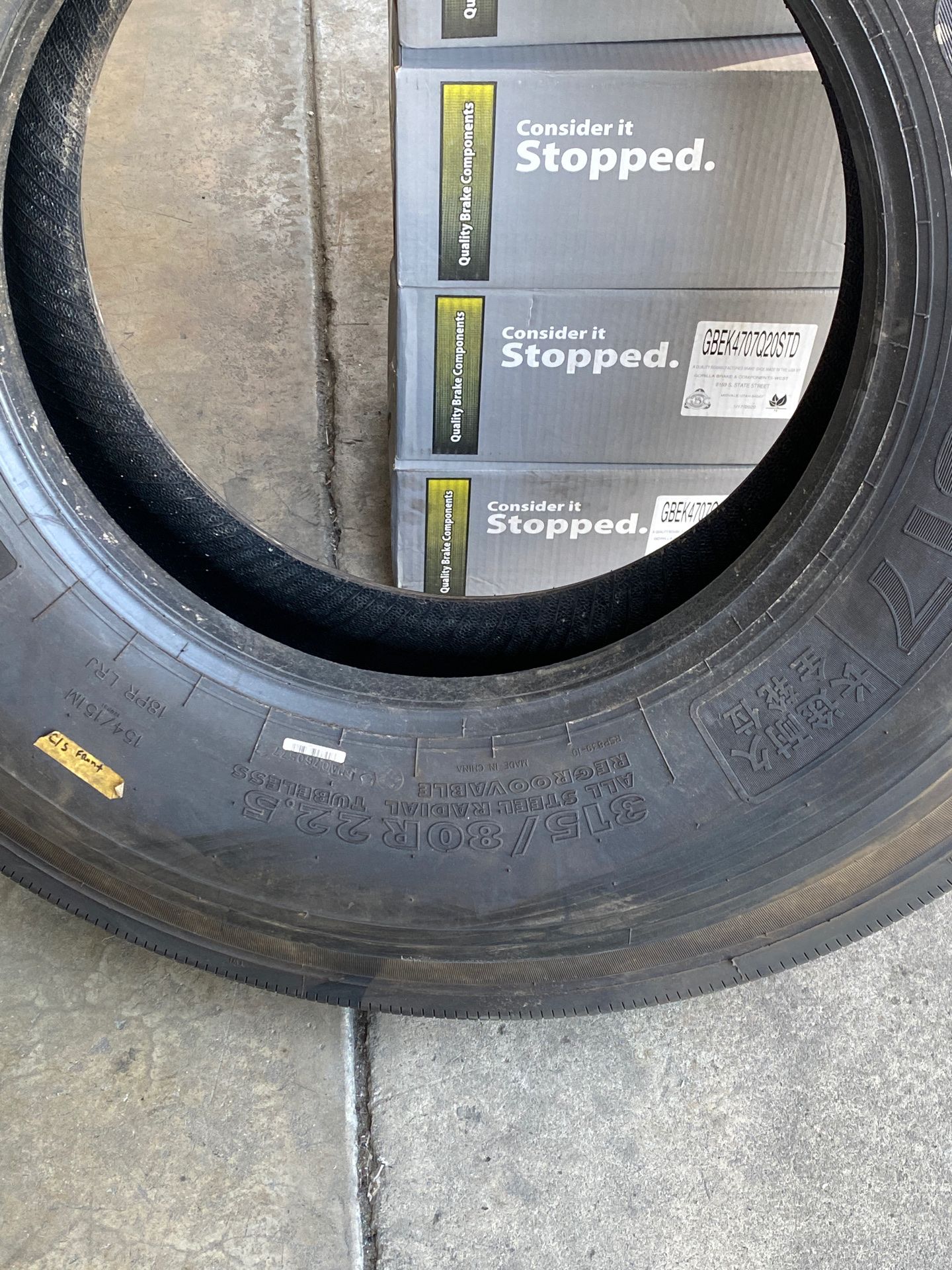Within the realm of extensive shipping, the significance of robust tires for large trucks is crucial. These tires are the backbone that carry the immense weight of goods and provide the necessary grip , stability , and safety as trucks traverse multiple driving environments. Regardless of whether it's the unyielding length of highways , meandering secondary roads , or challenging terrains , the right tires play a crucial role in guaranteeing efficient and optimal operations.
Determining the correct tires for a large truck can significantly impact not only the vehicle's operation but also fuel efficiency , security , and general maintenance expenses. With so many companies and choices in tires on the market , it's essential for truck drivers to understand the different types of tires, signs indicating the need for new tires , and how to look after them effectively . As the transportation sector continues to change , being aware about tire advancements and patterns is critical for anyone involved in long-haul logistics.
Determining the Right Tires for Long-Distance Hauling
Picking the appropriate tires for long-distance hauling is crucial for enhancing efficiency and safety. The specific demands of long hauls call for tires that can withstand prolonged wear while keeping performance under heavy loads. Factors such as tire tread pattern, rubber makeup, and overall construction play a key role in how tires perform over long distances. It's vital to consider the type of cargo being transported and the pathways taken, as these elements will influence the best tire options.
When evaluating tire choices, understanding the differences between front and rear tires is essential. Steer tires are designed for control and steering precision, guaranteeing optimal steerability and responsiveness. In contrast, drive tires must deliver traction and durability to support the weight and stress of long-haul loads. Evaluating the right balance between these tire types based on your operations can yield better performance and safety on the road.
Fuel economy is another key consideration in selecting tires for extended transport. Certain tire designs are crafted to lessen rolling resistance, which can lead to substantial fuel savings over time. Additionally, ensuring proper tire pressure is crucial for optimal fuel efficiency and overall tire health. Making sure that tires are pumped to their recommended pressure levels can stop uneven wear and lengthen the lifespan of your tires, ultimately contributing to lower operating costs.
Tire Maintenance & Protection for Large Trucks
Effective tire maintenance is essential to guaranteeing that security along with efficiency for semi-trucks during extended hauls. Frequent inspections must consist of examining the presence of tread depth, damage, as well as possible signs of uneven wear, as this could point to misalignment or improper inflation. Ensuring appropriate air pressure in tires merely extends their lifespan while also greatly enhances fuel efficiency. The significance of proper tire inflation must not be overstated, since under-inflated tires can result in blowouts and compromised handling, that pose serious risks on the road.
A critical aspect of tire maintenance concerns adherence to DOT regulations about tire condition as well as performance standards. Fleet managers must keep meticulous records regarding inspections, pressure checks, as well as maintenance performed for each tire. Educational programs & training of drivers along with maintenance personnel might promote a culture for safety and awareness, guaranteeing that everyone knows the role of tires play in overall vehicle performance along with safety. With investing in tire management training, fleets might prevent costly accidents along with downtime due to tire-related issues.
Additionally, best practices in semi-truck tire maintenance comprise regular tire rotations along with balancing for preventing uneven wear. It is for drivers to rotate tires every 6,000 to 8,000 miles, depending on the specific tire type and vehicle use. This practice helps achieve even wear across every tires, maximizing the lifespan of the tires. Understanding how road conditions can affect tire performance is just as important, as challenging environments could require more frequent checks and maintenance to maintain safety remains a priority.
Future Trends in Truck Tire Technology
The evolution of truck tire technology is poised to incorporate innovations in smart technology and networking. Smart tires, fitted with detection systems and tire pressure monitoring systems, are going to allow logistics managers to access real-time data about tire status. These technologies not just improves safety by facilitating preventive care but further enhances gas mileage by guaranteeing proper tire pressure. As such innovations advance, the integration of AI could lead to anticipatory analytics that foresee tire degradation and refine tire choice based on particular pathways and loads.
An additional major trend is the creation of sustainable tire components and designs. Producers are increasingly focusing on eco-friendliness, manufacturing tires made from sustainable materials and recycled materials. These eco-conscious options not only reduce the ecological impact of the logistics sector but can also provide enhanced fuel efficiency. Additionally, advancements in tread designs that lessen friction are gaining traction, contributing to decreased expenses for trucking companies while maintaining strong performance over vast distances.
Finally, innovation in tire retreading technology remains a critical area for the long-haul transport sector. Retreaded tires can drastically cut expenses while supporting sustainable practices, as they prolong the lifespan of existing tire casings. Enhanced retreading https://newmuslim.iera.org/members/cribhill22/activity/131798/ that utilize advanced materials and technology can produce tires that fulfill the requirements of today's trucking while maintaining dependability and safety standards. As these emerging trends unfold, they will transform the landscape of truck tires considerably, impacting factors from financial planning to eco-conscious practices.

